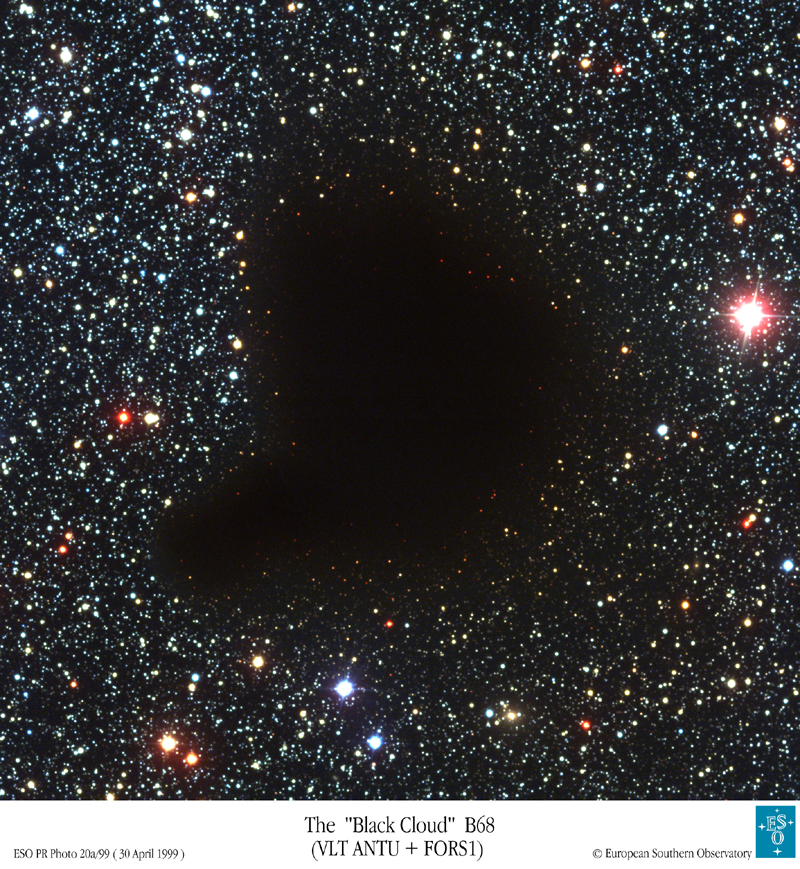 We can see shadows, even though surely shadows don't exist—there is nothing to them, but lack. Dark nebulae can also be seen, as the photo shows. However, a dark nebula isn't a complete nonentity like a shadow. It is a molecular cloud of particles that obscure the stars behind it. Those who believe in unrestricted compositionality will even think that they are really existing objects. But seeing a dark nebula is rather different from seeing a shadow. The shadow's shadowy being is constituted by the absence of light. The absence of light in the case of the dark nebula does nothing to constitute the nebula—it is simply that the dark nebula has absorbed the light from the stars and other objects behind it.
We can see shadows, even though surely shadows don't exist—there is nothing to them, but lack. Dark nebulae can also be seen, as the photo shows. However, a dark nebula isn't a complete nonentity like a shadow. It is a molecular cloud of particles that obscure the stars behind it. Those who believe in unrestricted compositionality will even think that they are really existing objects. But seeing a dark nebula is rather different from seeing a shadow. The shadow's shadowy being is constituted by the absence of light. The absence of light in the case of the dark nebula does nothing to constitute the nebula—it is simply that the dark nebula has absorbed the light from the stars and other objects behind it.Here is an argument that we see dark nebulae. Two nights ago, I tried to see Barnard 91. I thought I saw it, but I was looking at the wrong thing. So, I tried to see it, and failed. But this suggests that there is a distinction between seeing and not seeing it.
There may seem to be something paradoxical here. Isn't seeing supposed to be a causal process, where patterns of light are seen and caused by the object seen? But in the case of the dark nebula—or a human silhouette in the dark, outlined against a light—it is precisely a matter of the absence of light caused by the object seen. However, patterns can be constituted by absence as well as presence. When I look at a sheet of transparent red plastic, the redness of the plastic comes from the plastic's selective transmission characteristics: it lets red light through, and holds back much of the rest of the visible spectrum. The case of the dark nebula and silhouette are just limiting cases of this.
But what the above helps show is that the "in the right way" causal condition for seeing is going to be very complicated. Does this matter? Maybe: it does make life harder for reductionist accounts of perception.
Really? As I understand it, our brain's create their own useful fiction to represent the information streaming into the eyes. We don't see the actual vibrations of the color spectrum either. So it's the same cut of brain fiction whether it's a positive or a negative viewing or something *in concept*.
ReplyDelete